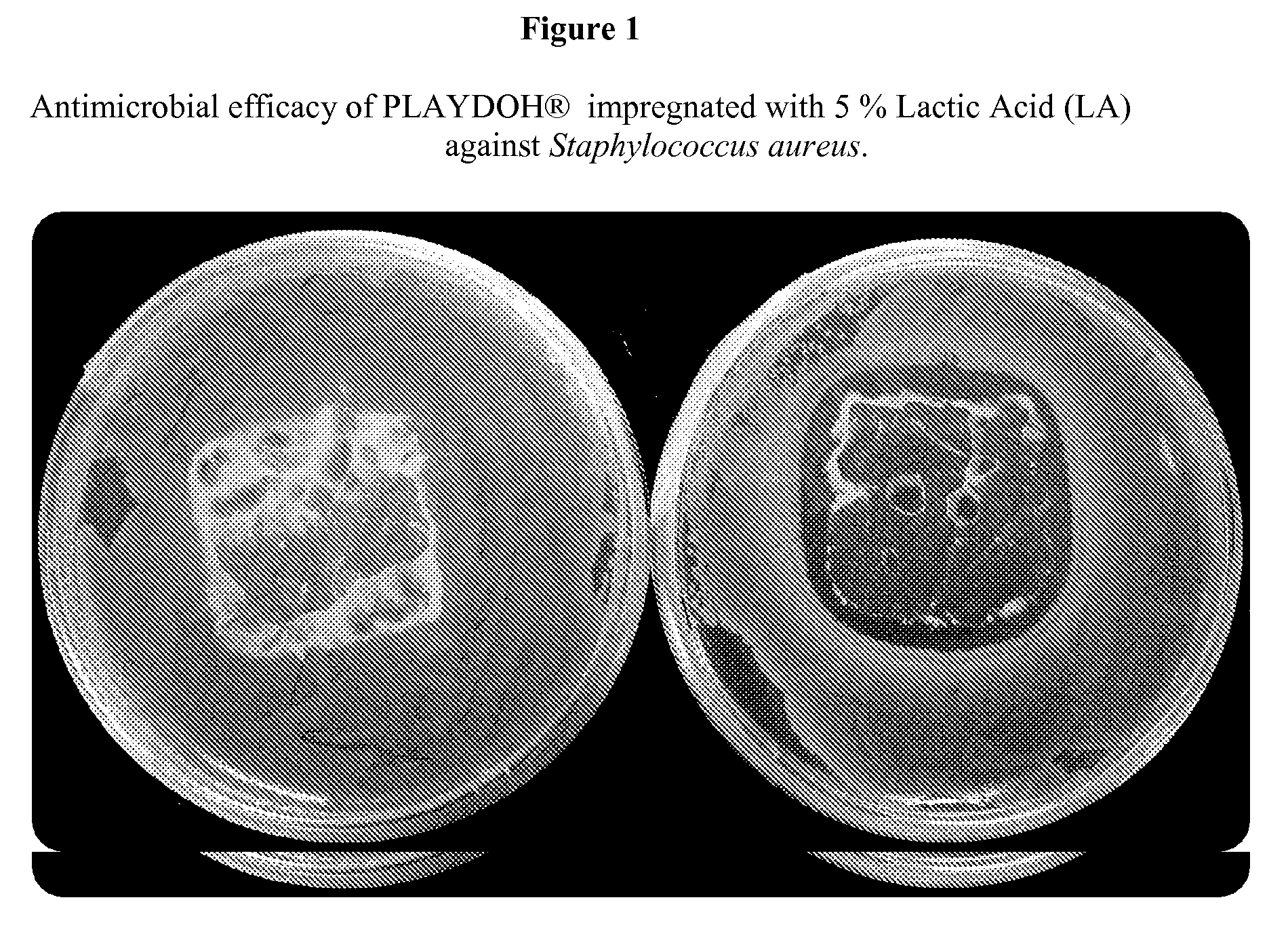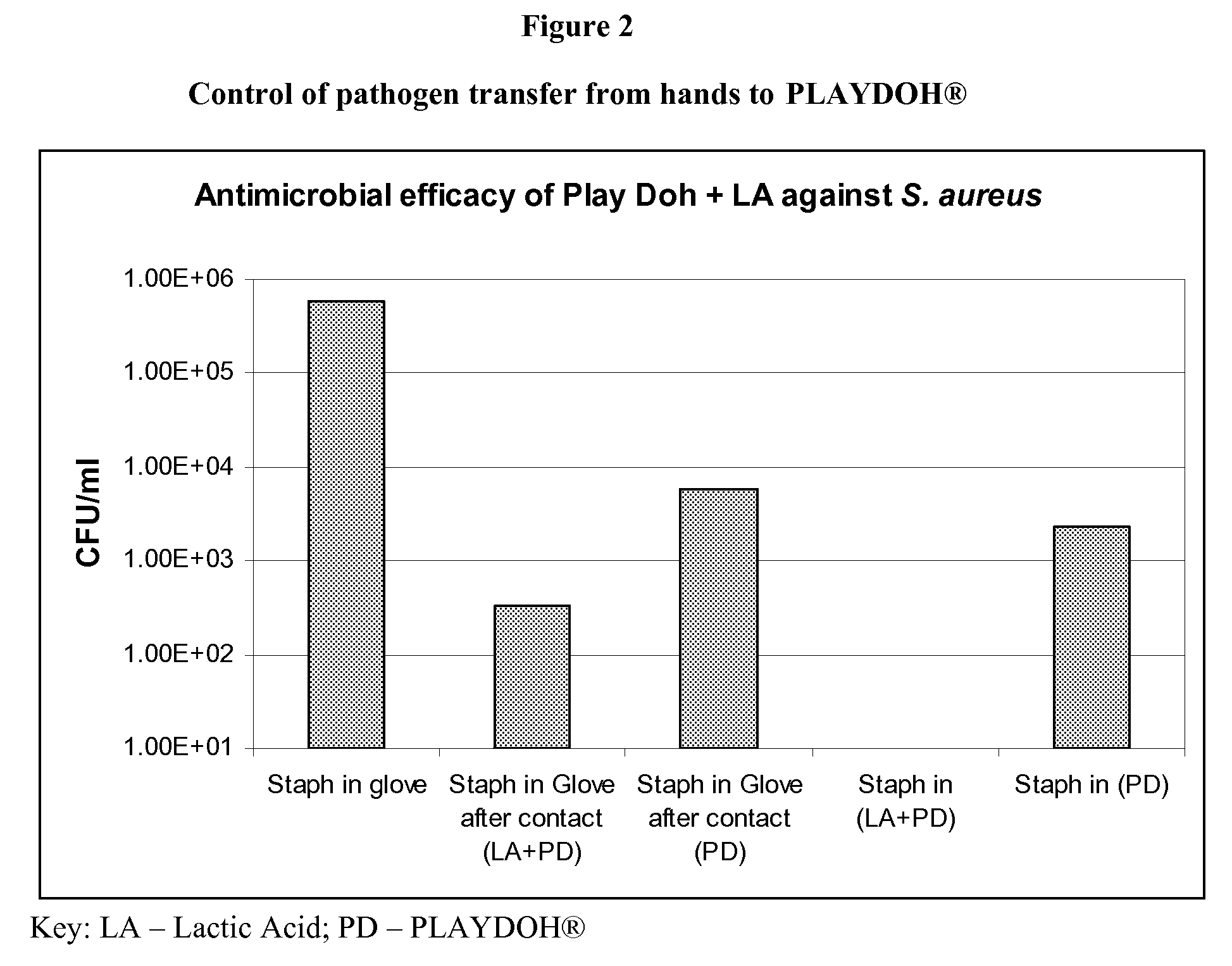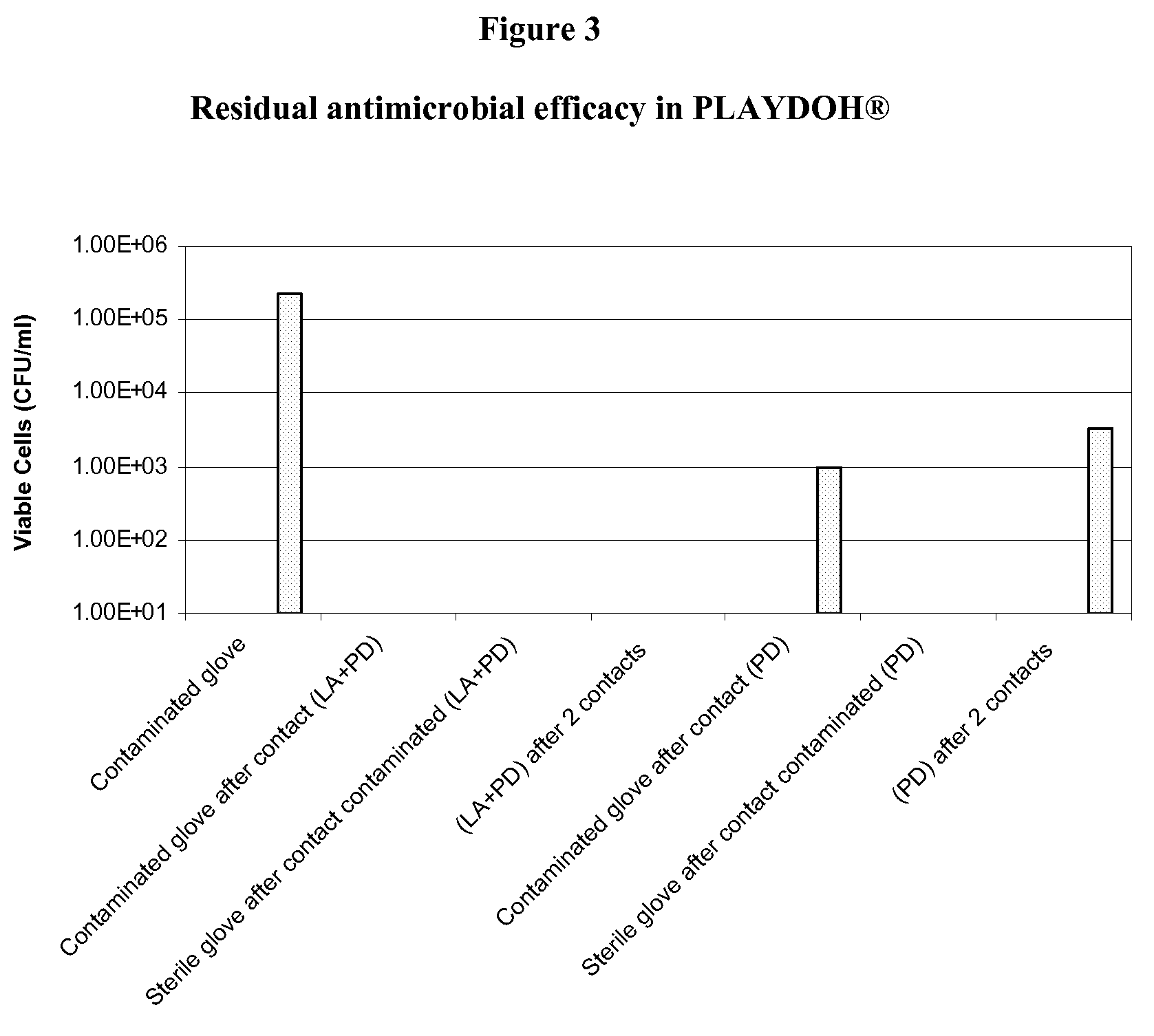Skin Sanitizing Object
a skin area and object technology, applied in the direction of sheet delivery, pharmaceutical delivery mechanism, bandages, etc., can solve the problems that washing with soap and water is not always available or convenient, and achieve the effect of sanitizing the skin area immediately and killing bacteria, safe and effective
- Summary
- Abstract
- Description
- Claims
- Application Information
AI Technical Summary
Benefits of technology
Problems solved by technology
Method used
Image
Examples
example 1
Preparation of a Hand Sanitizing Object
[0093]52.13 grams of uncontaminated commercially available PLAYDOH® (Hasbro Inc.) was kneaded with gloved hands for 5 min. 2.5 grams of powdered Lactic acid (100% active—PURAC) was added to the PLAYDOH®. The composition was kneaded with gloved hands for an additional 5 min. The final composition comprises 95.43% modeling composition and 4.57% lactic acid.
example 2
Preparation of a Hand Sanitizing Object
[0094]120 grams of all-purpose flour was added to 250 grams water and heated to 100° C. while stirring constantly. Upon boiling, the composition was removed from the heat and 28 grams of potassium bitartrate, 36 grams of sodium chloride and 10 grams of tea tree oil was added. Mixing was continued until the composition was cooled. The final composition comprises 27% flour, 56.3% water, 6.3% potassium bitartrate, 8.1% sodium chloride, and 2.3% tea tree oil.
example 3
Preparation of a Hand Sanitizing Object
[0095]9.25 grams of a 4% sodium borate solution (Sigma-Aldrich) was combined with 1.5 grams of a silver-citrate solution (Ciba). To this, 99.25 grams of a 4% poly(vinyl alcohol) solution (Sigma-Aldrich) was slowly added while vortexing. The composition was allowed to mix for 3 minutes or until thick and allowed to set for an additional 5 min. without stirring. The final composition comprises 99.724% modeling composition and 0.276% silver-citrate.
PUM
| Property | Measurement | Unit |
|---|---|---|
| rupture time | aaaaa | aaaaa |
| melting point | aaaaa | aaaaa |
| temperature | aaaaa | aaaaa |
Abstract
Description
Claims
Application Information
 Login to View More
Login to View More - R&D
- Intellectual Property
- Life Sciences
- Materials
- Tech Scout
- Unparalleled Data Quality
- Higher Quality Content
- 60% Fewer Hallucinations
Browse by: Latest US Patents, China's latest patents, Technical Efficacy Thesaurus, Application Domain, Technology Topic, Popular Technical Reports.
© 2025 PatSnap. All rights reserved.Legal|Privacy policy|Modern Slavery Act Transparency Statement|Sitemap|About US| Contact US: help@patsnap.com



